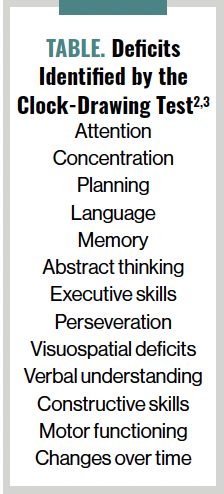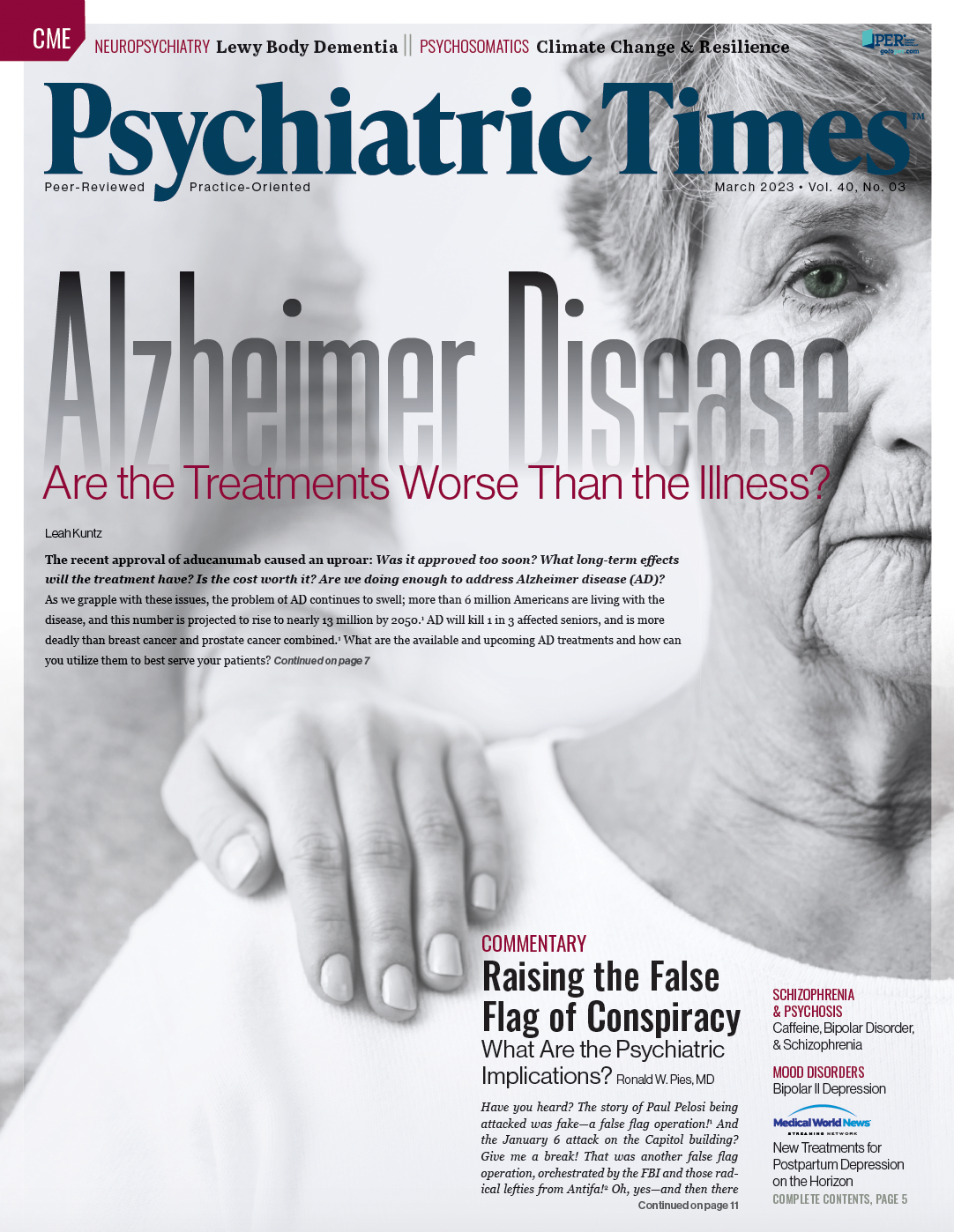Publication
Article
Psychiatric Times
The Clock-Drawing Test
Author(s):
A look at one of the most informative yet easy-to-administer tests for assessing brain dysfunction.
guguart_AdobeStock

One of the most informative yet easy to administer tests for assessing brain dysfunction is the Clock-Drawing Test (CDT). It takes less than a minute and can serve as an excellent screening tool for cognitive impairment, dementia, and brain insults of many types.
The range of neurological disorders that the CDT can help to diagnose and/or follow over time include Alzheimer disease, Parkinson disease, Huntington disease, traumatic brain injury, cerebral vascular disease, unilateral neglect, focal cerebral lesions, strokes of different etiologies, multiple sclerosis, schizophrenia, and delirium.1,2 The Table lists the wide-ranging deficits that the CDT can reveal.2,3
Table. Deficits Identified by the Clock-Drawing Test2,3

Reflecting on my residency training in psychiatry at the University of MA Medical Center in Worcester, I had the privilege to learn from neuropsychiatrist Sheldon Benjamin, MD. Each year, Dr Benjamin held a contest for all psychiatry residents, inviting us to provide a case study of a patient we had evaluated—including the patient’s CDT and how the information gleaned from it contributed to determining the diagnosis. The contributor of the most dramatic case, if I remember correctly, received a neuropsychiatry textbook.
The history of the CDT is rather opaque despite the fact it has earned its place as one of the most widely used cognitive screening tests in clinical and research settings. Although the textbook The Parietal Lobes, published in 1953 and written by Macdonald Critchley, is often cited as the first description of the CDT, references to its use go back to 1915.4 Although initially used as a test for constructional apraxia and aphasia-related disorders during the 1980s, it remains a popular screening tool for cognitive disorders, even today.
Sensitivity and Specificity
The literature on the CDT has consistently supported its use as a cognitive screening tool. Most studies demonstrate 85% mean sensitivity and specificity. The CDT can screen positive for likely cognitive impairment/dementia when the Mini-Mental State Examination (MMSE) results are unremarkable, hence identifying cognitive impairment earlier.
When the MMSE demonstrates cognitive impairment, the findings correlate strongly with the findings on the CDT. The CDT has high levels of interrater and test-retest reliability. Despite more than a dozen scoring systems, all report similar psychometric properties.5 The weakness of the CDT is decreased sensitivity and variable specificity when a patient has mild cognitive impairment or early dementia.6
Administering the CDT
Only a blank piece of paper and a pencil are needed to administer the CDT. The patient is told to draw the face of a clock with all the numbers in the appropriate locations. An optional second part can provide significant information on a range of brain dysfunction. The examiner asks the patient to draw in the hands of the clock so that the time is 10 minutes past 11. A clinician experienced with brain structure and function should examine the clock that was drawn.
Figure. CDTs From Patients With Various Diagnoses

The piece of paper should be scanned into the patient’s chart. Serial CDTs can be used to monitor brain function over time—deterioration or improvement. The Figure demonstrates clocks that may be seen from patients with different neurological conditions.
Concluding Thoughts
The CDT, now more than 100 years old, has consistently proven to be an accurate, reproducible tool in evaluating a patient’s cognitive function in a wide range of brain activities. It is simple to administer, requires very little time, and can provide valuable insights into strengths and weaknesses of brain functions. Moving forward, an unanswered question is what the durability of the CDT will be as the digital generation, many of whom never look at a clock, ages.
Dr Miller is Medical Director, Brain Health, Exeter, New Hampshire; Editor in Chief, Psychiatric TimesTM; Staff Psychiatrist, Seacoast Mental Health Center, Exeter; Consulting Psychiatrist, Exeter Hospital, Exeter; Consulting Psychiatrist, Insight Meditation Society, Barre, Massachusetts.
References
1. Mainland BJ, Shulman KI. Clock Drawing Test. In: Larner AJ, ed. Cognitive Screening Instruments: A Practical Approach. Springer; 2017.
2. Aprahamian I, Martinelli JE, Neri AL, Yassuda MS. The Clock Drawing Test: a review of its accuracy in screening for dementia. Dement Neuropsychol. 2009;3(2):74-81.
3. Agrell B, Dehlin O. The clock-drawing test. 1998. Age Ageing. 2012;41(suppl 3):iii41-45.
4. Hazan E, Frankenburg F, Brenkel M, Shulman K. The test of time: a history of clock drawing. Int J Geriatr Psychiatry. 2018;33(1):e22-e30.
5. Shulman KI. Clock-drawing: is it the ideal cognitive screening test? Int J Geriatr Psychiatry. 2000;15(6):548-561.
6. Pinto E, Peters R. Literature review of the Clock Drawing Test as a tool for cognitive screening. Dement Geriatr Cogn Disord. 2009;27(3):201-213.

Newsletter
Receive trusted psychiatric news, expert analysis, and clinical insights — subscribe today to support your practice and your patients.






